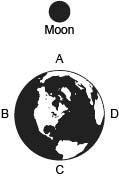
Chemistry, 30.08.2019 00:50 amorosoavap5cejz
Ammonia can be produced via the chemical reaction n2(g)+3h2(g)? 2nh3(g) during the production process, the production engineer determines the reaction quotient to be q = 3.56×10? 4. if k = 6.02×10? 2, what can be said about the reaction?

Answers: 1


Other questions on the subject: Chemistry

Chemistry, 22.06.2019 07:20, rex1578
Part b: study of equilibrium on solubility: mg(oh)2(s) ⇌ mg2+(aq) + 2 oh–(aq) cloudy clear (pink) 7. a. b. 8. a. b. 9. 10. 11. 12. when adding concentrated hydrochloric acid, how did the appearance of the equilibrium mixture change? the change in appearance indicated a shift in the point of equilibrium. in which direction did the equilibrium shift? (l) left (r) right explain your answer to question 7a. you should indicate which ion was added to or removed from the equilibrium mixture. when adding edta, how did the appearance of the equilibrium mixture change? the change in appearance indicated a shift in the point of equilibrium. in which direction did the equilibrium shift? (l) left (r) right explain your answer to question 8a. you should indicate which ion was added to or removed from the equilibrium mixture. upon heating in which direction is the equilibrium shifting? upon cooling in which direction is the equilibrium shifting? is the forward reaction a. endothermic explain your answers to questions 9, 10, and 11. (l) left (r) right (l) left (r) right b. exothermic
Answers: 1

Chemistry, 22.06.2019 14:50, ladybugperez05
Which of the following is most likely true about water in chemical systems? a) water dissolves nonpolar ionic compounds. b) water dissociates ionic compounds. c) water dissociates covalent molecules. d) water dissolves nonpolar covalent substances.
Answers: 1


Chemistry, 23.06.2019 09:30, oscarruiz
The allotropes of carbon include a variety of structures that include three-dimensional tetrahedral lattices, planes of hexagonal rings, cylindrical tubes of hexagonal rings, and spheres of five- and six-membered rings. similar shapes of network covalent atomic solids are possible with carbon nitride, boron, and pure silicon (e. g., silicene is a graphene-like allotrope of pure silicon). in contrast, silicates exist as either highly ordered or amorphous (more random) three-dimensional lattices. what could explain why there are there no naturally occurring sheets, stacked sheets, cylindrical tubes, or spheres of network covalent atomic solids composed of silicon and oxygen (sio2)? would pure silicate structures make good lubricants or good electrical conductors?
Answers: 3
You know the right answer?
Ammonia can be produced via the chemical reaction n2(g)+3h2(g)? 2nh3(g) during the production proces...
Questions in other subjects:

Mathematics, 13.11.2020 06:00

History, 13.11.2020 06:00

Social Studies, 13.11.2020 06:00


Mathematics, 13.11.2020 06:00

Mathematics, 13.11.2020 06:00

Mathematics, 13.11.2020 06:00


Social Studies, 13.11.2020 06:00

Mathematics, 13.11.2020 06:00




